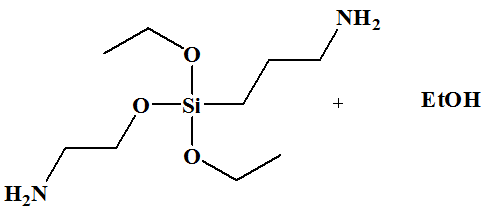
Synthesis and research of polyfunctional silicon-containing amines – new promoters of adhesion
Abstract
Keywords
Full Text:
PDFReferences
Rogozhina LG, Kuzmin MV, Ignatiev VA, Kolyamshin OA, Koltsov NI. Investigation of the effect of alkanolamines on the properties of epoxy anhydride compositions. Journal of Applied Chemistry. 2016;89(11):1481–7. doi:10.1134/S1070427216110161
Zagidullin AI, Kolpakova MV, Garipov RM, Stoyanov OV. Structure and properties of epoxy composites hardened with new silicon-containing amines. Glue. Sealants. Technology. 2008. (1):17–9. doi:10.1134/S1995421208030052
Pradhan S, Mohanty S, Nayak S. Waterborne epoxy adhesive derived from epoxidized soybean oil and dextrin: synthesis and characterization. International Journal of Polymer Analysis and Characterization. 2017;22(4):318–29. doi:10.1080/1023666X.2017.1295516
Rajan R, Rainosalo E, Thomas SP, Ramamoorthy SK, Zavasnik J, Vuorinen J, Skrifvars M. Modification of epoxy resin by silane-coupling agent to improve tensile properties of viscose fabric composites. Polymer Bulletin. 2018;75(1):167–95. doi:10.1007/s00289-017-2022-2
Kunal M, Libin KB. Influence of naturally occurring fiber (switchgrass) reinforcement on the mechanical properties of epoxy resin. Biomedical Journal of Scientific & Technical Research. 2019;20(2):14861–3. doi:10.26717/BJSTR.2019.20.003418
Efremov AA, Zagidullin AI, Kolpakova MV. Use of organosilicon compounds as modifiers of epoxy compositions. Polymer Science, Series D. 2008;(1):244–8. doi:10.1134/S19954 21208040060
Yao H, Hang J, Sun X, Jin L, Shi L, Zhang J. Preparation and anticorrosive behavior of epoxy-polysiloxane hybrid coatings modified by polyetheramines. Journal of Adhesion Science and Technology. 2014;28(12):1103–16. doi:10.1080/016942 43.2013.87 5609
DOI: https://doi.org/10.15826/chimtech.2020.7.4.11
Copyright (c) 2020 K. Yu. Ivanova, M. V. Kuzmin, N. I. Kol’tsov

This work is licensed under a Creative Commons Attribution 4.0 International License.
Chimica Techno Acta, 2014–2025
eISSN 2411-1414
Copyright Notice






